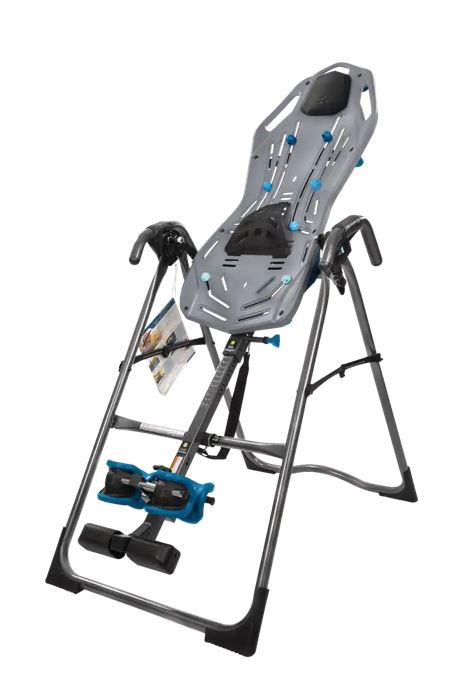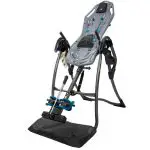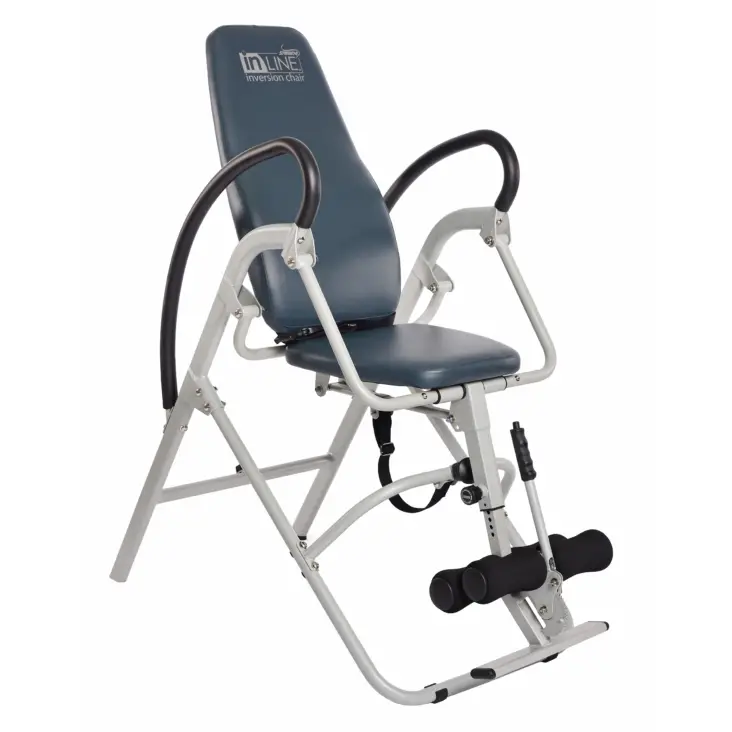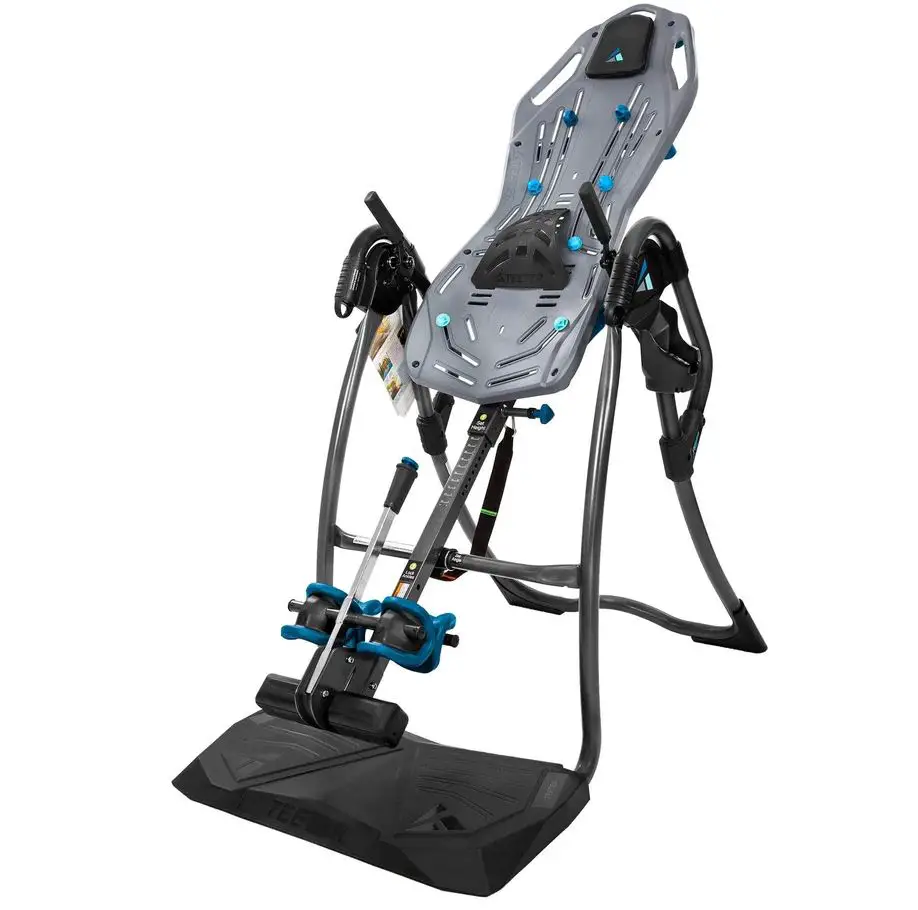Recurring Back Pain
The best inversion tables are for you to check out if you have that irritating back pain which keeps on recurring. Unfortunately, for many of us, back pain and also spinal pain, are natural effects of getting older and also depending on the lifestyle that you have.
It is advised that you don’t ignore these warning signals because if you do, your injury might worsen, or to an extreme extent, result in paralysis.
The natural turn of events would expect you to consult for physical therapy and in this case, inversion therapy is one of the available solutions.
The physical therapists will have in their toolbox their own inversion tables in order to execute inversion therapy. Once you get the “hang” of it, literally speaking, and inversion seems to agree with you, why don’t you purchase your own inversion table?
When you have your own inversion table, you can use it anytime at your convenience, whether at your home or your office.
Choose The Best Inversion Table For Your Needs
For you, we have ran down a list of the best inversion tables in the market today. Choose one according to what works best for you.
TEETER EP-560
It is considered one of the best overall tables to deliver excellent inversion therapy. When you assemble it, you will have no problem at all because it is so user friendly. And it is so safe to fully invert.
Most of the parts are pre-assembled and the rest of the process is pretty much logical and intuitive. Just make sure you follow all the directions carefully and accurately because you wouldn’t want to go upside down on your inversion table, even it holds the trusted Teeter brand, that is not assembled correctly.
If your assemble process flows, the Teeter will take only 15 minutes to complete. Other tables that are tested take hours to assemble.
What is unique about the Teeter EP-560 is that it doesn’t make use of a lock and pin to adjust the angle of inversion. This is what other tables use. But in the case of the Teeter, it uses a strap which minimizes your effort of adjusting the inversion to the precise degree that you need.
In pin based mechanisms, you are only narrowed down to limited angles like 45, 60 and 80 degrees. But with the Teeter, you have freedom in choosing the angle you need.
When tested, it was also noticed that the Teeter doesn’t flip too quickly. This avoids the dizziness rush which takes effect when this happens with other models of the competition.
But it’s quite bulky to fold and store, and that is one of its downsides. But with an easy to manage assembly process and all the nice and safe features that were explained above, the Teeter seems like a worthwhile investment for your inversion therapy.
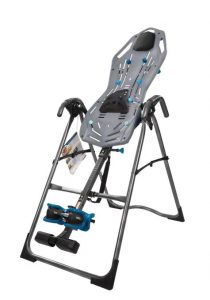
Skybike Mini Inversion Table
If you’re limited on space and you’re still trying inversion if it works for you, then, the Skyline Mini is the product for you. It is very comfortable to get on and off because of its small size.
You will use it on the floor when you invert your body, and not on a table. The element of safety stays with you because if ever you will fall, you will not fall so far.
Its foam rollers give you an effective upper back stretch and this feeling alone would make you want to stay inverted for awhile.
The Skybike Mini is already assembled when taken out of the box. But if you need a full sized table, this is not for you.
Beginnings Of Inversion Tables
If we look at the concept of inversion therapy in the general sense, it began as early as 400 BC during the early times in the life of Hippocrates, who is considered the Father of Medicine.
He didn’t make use of tables. What he did to accomplish inversion therapy is to hang the patient upside down on a ladder with ropes to fasten the patient down. He wanted gentle traction to be executed on the patient’s spinal column. This removes gravitational pressure on the spine and creates more space among the spine’s vertebrae.
No one really took on the pioneering efforts of Hippocrates until the 1960s when Dr. Robert Martin, an osteopath, chiropractor and medical doctor simultaneously), proposed The Gravity Guidance System which espoused the beneficial effects of gravity on the human body, when done correctly.
In 1983, Dr. Goldman published a study which practically eliminated inversion therapy as a worthy solution to spinal problems and back pain. But in 1985, he corrected himself a full 360 degrees when he rejected himself all the negative statements he said about inversion therapy. He said that it was very beneficial and that there are no risks of cardiovascular scenarios, strokes or serious injuries that could be the cause of inversion. The message here is that inversion solutions are beneficial when done correctly.
From the 1990s up to today, inversion had grown in popularity and has continued to attract many patients to be healed back to good health through the use of the inversion table.
Features To Look For In An Inversion Table
When you are in the market for an inversion table, give priority to safety features because inversion without safety can’t accomplish its objectives of alleviating your back pain and spinal problems.
Be on the lookout for safety features like adjustable ankle holders and body straps. Your ankle and torso size might be out of the standard fittings, so universal fit holders and straps could be your solutions for your comfort while inverting.
Also, padding and handles that are comfortable and functional makes a big difference in the health value that your chosen inversion table will give you.
If you are affected by the price range, the ease of assembly and the storage mechanism of the table, by all means, check these concerns too.
Your inversion table will be serving you for a long time. Choose what’s best for your needs.
